The Aviator (PG-13)

Starring: Leonardo DiCaprio
December 2004
“A Modest Triumph in Retro-Cinema”
The Aviator is finely mounted, well crafted and star-studded, but it fails to attain its desired status as modern epic. Martin Scorsese and Leonardo DiCaprio have reunited (Gangs of New York), presenting a soaring biopic of billionaire, industrialist and playboy, Howard Hughes. There’s no doubting the skill set of every person in every department that toiled on this film or the talent of the vast array of A-list actors that appear here, and yet, there’s still something lacking.
Perhaps it’s a matter of identification: how many of us have experienced the pressures of being a billionaire or struggled with the extreme mental aberrations Hughes dealt with on a daily basis? Perhaps it’s the preponderance of narrative or the scarcity of action sequences? Perhaps its film’s length—The Aviator weighs in at three hours and five minutes—or some other, intangible, factor.
Whatever the reason, the movie succeeds as a work of art, but fails to entertain in any significant way: when Hughes repeats “The wave of the future” like a skipping CD right before the final fade, have we really been impacted on an emotional level or do we just pity the man in the mirror?
DiCaprio does a superb job of bringing Hughes’ passions, foibles and eccentricities to life and Cate Blanchett turns in a marvelous performance as Katherine Hepburn: their best scenes together are the golf game, Hughes teaching Hepburn how to fly, the meet the parents debacle and their fulminating breakup. Two foils for Hughes in the movie (other than his O.C.D. and fits of hypochondria) are Juan Trippe (Alec Baldwin), owner of rival Pan Am Airlines and Senator Brewster (Alan Alda in an Oscar-worthy performance), a crooked politician bent on destroying Hughes in a sure-fire trial that turns into a media circus.
The rest of the cast reads like a SAG roll call: Jude Law (as Errol Flynn), Kate Beckinsale (as Eva Gardner), Gwen Stefani (as Jean Harlow), John C. Reilly, Edward Herrmann, Willem Dafoe, Ian Holm, Brent Spiner, the list goes on and on.
I have to admit that The Aviator is a lavish spectacle featuring a powerfully moving, human story, but its sheer size and power left me a little overwhelmed—it’s so overstuffed and top heavy that it collapses under its own weight. All the movie’s bells and whistles seem to cry, “Look at me. Look at what an exceptional film this is.” Some may buy into the movie’s sizzle, but the meat I crave is of a different ilk. In the end, The Aviator has Hughes-sized ambitions that render the film a high-powered oddity.
Rating: 2 1/2
Meet the Fockers (PG-13)
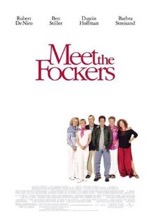
Starring: Ben Stiller
December 2004
“Great Performances Fail to Save Unoriginal Sequel”
The movie opens with a sequence of fortunate events for Greg Focker (Ben Stiller) and Pam Byrnes (Teri Polo)—someone gives up their cab for the couple, all the stoplights turn green for them on their way to the airport, and Greg’s oversized carry-on is taken to the captain’s personal storage locker. Of course, we all know this streak of good luck won’t last for long…and it doesn’t.
Meet the Fockers, the sequel to the popular one-disaster-after-the-next flick, Meet the Parents, is a nothing more than a retelling of the original—the only new element is the addition of Greg’s parents into the dysfunctional mix. Bernie Focker (Dustin Hoffman) is a semi-retired lawyer who sports a dark tan and an array of Hawaiian shirts and his wife, Roz (Barbara Streisand), is a sex therapist for the geriatric set.
Robert DeNiro is back as the stiff and ever-paranoid former C.I.A. agent, Jack Byrnes, and his screen wife, Dina (Blythe Danner) remains the only voice of reason in the midst of calamitous family get-togethers. Greg and the Byrnes’ pile into Jack’s new, state-of-the-art R.V., which is tantamount to a fine motel room on wheels (complete with hidden spy suite), and head to the Focker house in sweltering gator territory. Jack’s grandson from his other daughter joins them on the road trip, and it quickly becomes clear that the only purpose the child serves is to provide a cute face and some comic relief.
If there is a part of the movie that plays well, it’s the friction between Jack and Bernie; from the moment Bernie hugs Jack and pecks him on the cheek, you know it’s going to be a long visit. These fathers—and families—are diametrically opposed when it comes to lifestyles and worldviews and the sparks fly high and often during “family times.” As if things aren’t going rough already, the startling revelation that Pam is pregnant sends both families reeling. Of course, issues are worked out and relationships are mended or built by movie’s end and a humorous wedding wraps up the zany storyline. Owen Wilson reprises his role as Pam’s former fiancé and is the priest that marries the happy couple (Wilson singing in Hebrew is a hoot).
To its own detriment, Meet the Fockers returns to the same well that spawned its predecessor—the Murphy’s Law sequences feel forced and their predictability really detracts from the movie’s intended impact. The film is loaded with crude humor and some scenes are just plain wrong. It’s truly unfortunate that this amazing array of talent was wasted on such pedestrian fare. I guess the most fitting reaction to the movie is right on the poster.
Rating: 2
Flight of the Phoenix (PG-13)

Starring: Dennis Quaid
December 2004
“Like the Plane, Stays Grounded Most of the Time”
What you have here is your basic airplane crash/survival/rebuild the plane story with few original elements and even fewer surprises. A remake of the 1965 movie starring Jimmy Stewart, The Flight of the Phoenix is basically a Dennis Quaid vehicle picture, and even though he turns in his normal, polished performance, it’s still not enough to salvage this floundering premise.
Captain Frank Towns (Quaid) is the cargo plane pilot assigned to pick up the crew and equipment from a recently closed mine in Mongolia. As fate would have it, the mother of all sand storms (al a The Mummy and Hidalgo) assails the craft and violently forces it off course. The best effect in the film shows the left propeller spinning forward off its mount and slicing into the metallic hull just behind the cockpit. After an intense crash sequence, the survivors are faced with a dire tableau; the plane is half buried in the ubiquitous sands of the Gobi desert. To make matters worse, their water reserves and supplies are frighteningly low and the desert heat is unbearable.
Somewhere along the way, they decide to rebuild the plane with the guidance of weasel-eyed Elliot (Giovanni Ribinsi from Sky Captain and the World of Tomorrow). To add spice to the manual labor section of the film is an electrical storm, a mutiny and a run-in with the local nomads.
The only part of the movie that had real potential was the conflict between Frank and Elliot, who develops a God complex: after all, he knows how to build planes (toy model planes, it’s later discovered), and immediately takes to ordering everyone around. The most gratifying scene in the movie is when Frank hauls off and knocks Elliot on his butt. That scene, the Clinton-style pre-flight check and a few other random jokes are the only elements that make the movie even remotely memorable.
The movie’s resolution is particularly predictable and ends much too abruptly. So much is left unresolved in the film, like, how much gas do they have? And, are they going to fly all the way strapped onto the wings (and wouldn’t four people on one wing and two on the other imbalance the jury-rigged plane?). And are they going to kill Elliot when they get back or just loosen his straps and let gravity do the job? Actually, that would make for a more interesting story than the one presented here. The Flight of the Phoenix is one movie that shouldn’t have been resurrected from the ash heap.
Rating: 2 1/2
Ocean’s Twelve (PG-13)

Starring: George Clooney
December 2004
“A Lot Less, Even with One More”
The long-awaited follow-up to 2001’s stylish smash-hit, Ocean’s Eleven, features the same cast as the earlier film, plus Catherine Zeta-Jones, and is helmed, again, by Steven Soderbergh. The question that always arises with a sequel is: “Is it as good as the first?” Answer: Ocean’s Twelve fails to equal, much less surpass, its modern predecessor. Here’s a rare exception in scriptwriting, where too much plot is actually an impediment to the movie’s entertainment value.
Soderbergh has toned down the flashy editing style displayed in Ocean’s Eleven (which employed a variety of wipes, quick cuts and multiple/moving frame shots), but here, the disjointed storyline has nearly the same effect. How do you take an average script and make it seem more complex? Present it in a non-linear fashion! It worked for the first film, so why not try it again? This time around the narrative sleight of hand doesn’t work, because the audience is ready for it. Also, the movie is saturated with technical jargon from the thieving handbook, which comes off as gibberish to the average viewer not educated in criminology.
Ocean’s Twelve ambles along on cruise control for most of the movie and introduces very few new characters or situations. It’s almost as if the producers thought, “Shoot the picture in some amazing European locations, have the preponderance of A-list actors pull off another mind-blowing heist and audiences will love it.” Guess again! Character development is appallingly shallow in the film; the writers just expect us to know everything about these people from the first film and only make cursory attempts at reacquainting us with or expanding our knowledge of these characters in any meaningful way.
The movie makes some significant missteps near the climax: the Tess Ocean (Julia Roberts) playing Julia Roberts sequence is inane, as is Bruce Willis’ zany cameo (let’s add one more luminary to the film, because we’re not quite sure we have enough star-power). Saul (Carl Reiner), the potential wildcard, shows up to save the day, but is promptly thrown into jail with the rest of the incarcerated cast. Vincent Cassel’s villain, Night Fox, is a worthy, if under-developed adversary, but his dance through the lasers is simply a fast forward version of the one seen in Entrapment. And finally, the reunion between Zeta-Jones’ character and her thieving father feels contrived and lacks emotional punch.
Ocean’s Twelve is devoid of the light-hearted synergy that Ocean’s Eleven had in spades. Where’s the fun? Where’s the humor? The bottom line: Ocean’s Twelve would have been twice as enjoyable if it had been half as confusing.
Rating: 2
Finding Neverland (PG)
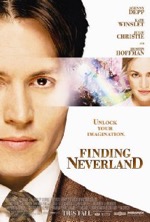
Starring: Johnny Depp
November 2004
“Magical Retelling of Tired Tale”
Based on the real life trials and successes of playwright, J.M. Barrie, the visionary who brought us Peter Pan, Finding Neverland is a moving film, rich in character and imagination. Finding Neverland is pure drama, so viewers looking for anything else will be sorely disappointed (like those two, giggly teenage girls who sat right behind me). The movie really delivers emotionally, revealing the human condition at its best and worst—its brightest and darkest.
Johnny Depp (Pirates of the Caribbean) is brilliant as Barrie and pulls off a surprisingly authentic Scottish brogue. Showcasing his expansive range, Depp masterfully reveals just how adept he is at being serious or silly and how skillfully he can morph from one into the other.
In the midst of a failing marriage, mediocre theater attendance and scathing reviews for his plays, Barrie escaped into the realms of his fertile imagination and created Neverland, a magical world, but what’s more, a guiding philosophy for his life. It’s this philosophy of optimism that anchors Barrie during the storms that incessantly assail him…the theater owner (a very un-Hook-like Dustin Hoffman) is pressuring him to produce a hit, his wife leaves him for another man, rumors of inappropriate activity surround his friendship with the newly widowed Sylvia Davies (Kate Winslet) and her four sons (two of them named Michael and Peter), the palpable disdain and disapproval he receives from Sylvia’s controlling mother (Julie Christy) and Sylvia’s untimely death from an unknown disease.
Winslet plays the beleaguered-but-not-showing-it single mother to the hilt; Barrie is a breath of fresh air to her lonely life, a touch of freedom and spontaneity to banish the doldrums of her regulated existence. The Davies children were excellently cast; their appearance, accents and attitudes are appropriate to the milieu and add to the movie’s emotional impact in small, but crucial ways…especially tenderhearted, teary-eyed Peter.
Dustin Hoffman’s appearances are infrequent, but his portrayal of the laconic theater owner is touching in an impersonal way—he genuinely believes in Barrie’s talent and is willing to put his money, reputation and career on the line for the young playwright. Together, they’re a potent team: one has the vision to fill theater seats and the other has a driving passion to fill people’s hearts with adventure and wonderment.
This account depicts Barrie as the quintessential gentleman, and the movie, itself, is a gentle thunder that doesn’t “wow” you, but has a lingering quality that lasts long after you’ve left the theater. Finding Neverland is magical cinema that transports the viewer to a place of hope and beauty that resides somewhere between our hearts and the second star to the right.
Rating: 3
National Treasure (PG)
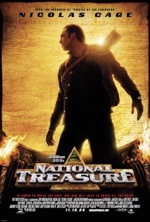
Starring: Nicholas Cage
November 2004
“One Man’s Treasure is Another Man’s Junk”
After getting past the preposterous notion that is the storyline of National Treasure, and after suspending my disbelief of the movie’s unfounded historical assertions and unrelenting contrivances, I actually found this Jerry Bruckheimer produced film to be modestly entertaining—in a “pass me the popcorn” sense. National Treasure surpassed my expectations and that’s largely due to the fact that the movie didn’t take itself too seriously, but rather, elevated the flimsy premise with fine performances and well-paced directing by Jon Turteltaub.
The first clue is discovered on an ice-entombed sailing ship in the Antarctic named “The Charlotte.” The rest of the clues involve Benjamin Franklin’s supposed secret writings and inventions and the Declaration of Independence (an invisible map inhabits the backside of the sacred document). What ensues is a present day Raiders of the Lost Ark romp, where the characters find and assemble clues in a multi-generational effort to discover a “spectacular” treasure that’s been collected and protected for centuries by the mysterious Freemasons—the earliest pieces span back to ancient Egypt.
Nicholas Cage (who plays lead character, Benjamin Franklin Gates) is a bit stiff at times, but his makeshift team, consisting of Abigail Chase (Diane Kruger) and Riley Poole (Justin Bartha), compensates for the actor’s deficiencies in compassion and comic relief. Cage cuts a confident figure as the adventurous treasure-seeker, but despite his best efforts to pull off the part of an action star, he still doesn’t hold a torch to Harrison Ford’s Indiana Jones (who could?).
Sean Bean, as Gates’ former partner turned chief adversary, Ian Howe, adequately portrays the “heavy,” but he was much better as the I.R.A. hit man in Patriot Games (another Ford connection). Playing Gates’ jaded father, Patrick, is Jon Voit, whose glorified cameo serves as the only voice of reason to his screen son’s wild leaps of logic and knee-jerk decisions. Brief appearances by Christopher Plummer and Harvey Keitel also pepper the movie; the former plays Gates’ grandfather and the later is the federal agent bent on capturing Gates and reacquiring the stolen Declaration of Independence.
National Treasure is action/adventure light: its like James Bond without any vices—no sex, no swearing and very little violence. The movie will doubtlessly seem insipid to hard-core action fans, but what the movie looses in S.W.M. viewers, it will undoubtedly more than recoup with younger viewers and whole families. Verdict: the movie’s appeal is extremely subjective—the audience will either discover a treasure trove or an empty chest.
Rating: 2 1/2
The Polar Express (G)
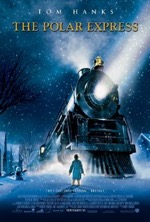
Starring: Tom Hanks
November 2004
“Warm at the Core…Icy Around the Edges”
Robert Zemeckis and Tom Hanks are back together again, changing venues from a deserted Pacific island to the frozen wasteland of the North Pole. Based on the Caldecott award-winning children’s book by Chris Van Allsburg, The Polar Express is an uplifting tale about a magical train that whisks selected children off to the North Pole for a visit with Jolly Ole Saint Nick.
Even from the jaw-dropping trailer, it was clear that The Polar Express would be the next iteration in computer-animated films. The movie is visually stunning (especially in IMAX 3-D), more so for virtual landscapes and breakneck action sequences than for the waxwork visages that make the characters appear too perfect.
Tom Hanks, again, asserts his range by playing/voicing five different characters in the film. Even with so much involvement, however, he’s still upstaged by the arduous and twist-riddled journey and by the train itself—the unsung hero of the movie.
The Polar Express, a feel-good story of friendship and courage, where warm fuzzies fly like arctic snowflakes, will undoubtedly be ushered into the halls of modern Holiday classics, but despite the enormous positive energy that surrounds it (almost like a cosmic aura), the film fails in several key areas.
The most obvious detractor is the simplicity of the plot and the straightforward manner in which the story is presented (granted the source material is a picture book for kids). I’m not spoiling anything when I say the majority of the movie takes place on the train; either going to or returning from the North Pole. Besides a wisp of character development here or there, the only element that lends the movie any kind of synergy is a series of adventures the train passengers have along the way. These mishaps, though engaging and exhilarating, are the only thing that holds the plot together.
Take, for instance, the young girl’s lost ticket that quickly becomes a silent seminar in Murphy’s Law. Although not nearly as exhausting as the sports almanac gimmick in Back to the Future 2 (also helmed by Zemeckis), the ticket’s flight and plight is still far-fetched and overplayed. If deja vu sets in while watching the dizzying POV sequence, it’s because you have, indeed, seen it before—not with a ticket, but with a feather (Forrest Gump—yup, Zemeckis again).
Is anyone else bothered by the fact that none of the characters have hot breath billowing out of their mouths? Or that the children, seemingly unaffected by the gelid night air, walk around in their pajamas and never once shiver? These trifling details, however, are small grievances next to the movie’s insidious ability to pull at the heartstrings with a well-worded phrase or a well-timed song. Though finely-crafted, the movie’s songs were strategically placed to produce the maximum number of tears, but the foisted emotions quickly fade when the final image of the nearly-deified, silver sleigh bell fades to black.
The Polar Express has some magical moments, but, if you’re unaffected by its unbridled emotionalism, it’ll leave you out in the cold. Some will feel richer for having completed the journey; others will feel like they’ve been taken for a ride.
Rating: 2 1/2
The Incredibles (PG)

Starring: Craig T. Nelson
November 2004
“Supercharged Thrill-ride That Lives Up to Its Name”
Finally…a movie that lives up to its boastful title! The Incredibles is the first Pixar animated feature to focus on “real” people; straying from toys, monsters and fish, the company took a huge risk, and delivered in a BIG way.
At first glance, a family that refuses to use their superpowers for fear of public scorn sets up a dubious premise, but fortunately, near the movie’s mid-point, Pixar’s renowned penchant for fun, frivolity and frenetically fast-paced action sequences kicks into high gear. Forced back into service by the dastardly deeds of Syndrome (Jason Lee), techno-villain and former fan boy who was jilted by Mr. Incredible (Craig T. Nelson) years earlier, the family of four (and a half) lands in the middle of one misadventure after the next. Saving dad is the first order of business and the second is stopping Syndrome and his colossal beach ball shaped robot tanks from wreaking havoc on the city (a la Sky Captain and the World of Tomorrow, and seemingly every other serial tale or comic book ever written).
The word that best describes The Incredibles is “creative,” and two factors that have forged the movie into an instant classic are: 1. As we’ve discovered in recent years, it’s all about strong narrative and fully realized characters, not eye-popping special effects (although, effects can be a valuable aid as long as they don’t supplant the story, i.e.: The Lord of the Rings trilogy). The humanity of the characters and their “abnormal” challenges makes for entertaining family fare: the fight at the dinner table is a hoot. Talk about dysfunctional! 2. Like any good piece of music, the movie has dynamics. It doesn’t peak too soon, but is paced to perfection, gradually building in suspense, peril and guffaws.
The Incredibles isn’t an outright comedy, but the situations the Parr family finds themselves in are absolutely hilarious. My personal favorites: Elastigirl (Holly Hunter) reconfigures herself into a rubber raft, while son (and Flash rip-off), Dash (Spencer Fox) becomes an off-board motor, and the sequence where Elastigirl is pinched into four different sections by two closed doors. The more the Incredibles discover new applications for their superpowers, individually and collectively, the more amusing the movie becomes and, ironically (or by design), the more power they exert over us. Case in point: Iceman wannabe, Frozone (Samuel L. Jackson), whose name alone made me chuckle for five minutes straight.
Lampooning superhero stereotypes isn’t the only thing The Incredibles does well (the cape gag was uproariously funny); family matters are at the core of the story, which drives home teamwork, courage, loyalty and the importance of having a great outfit designer.
The only downside to The Incredibles is that it runs ten minutes too long—this has to be the first two-hour animated feature (including the brilliant Jackalope short). The Incredibles is admittedly campy, but it’s also an exhilarating romp. One could even say it’s in…
Parting thought: With a similar array of superpowers, has this movie stolen any thunder from next summer’s The Fantastic Four?
Rating: 3
Ray (PG-13)
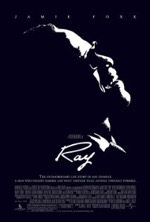
Starring: Jamie Foxx
October 2004
“Touching Tale Leaves Ray on Our Mind”
Ray Charles was one of the greatest singer/songwriters of our time. He was also a womanizer and a heroine addict. To its credit, Ray doesn’t gloss over these sordid details but exposes them for what they were…every star has foibles.
The movie begins with Ray getting on a bus and heading out to join a band in Seattle. As his career progresses, so does his back-story, which is revealed a chapter at a time in dreamy flashback sequences.
Reared in veritable poverty—in a sweltering Florida slum—Ray Charles had a fairly happy childhood playing games with his kid brother and terrorizing his hardworking mother. One day, Ray’s brother, while playing near a brimming washtub, slipped and drowned. Ray could have prevented the tragedy, but he just stood there, completely frozen in the oppressive heat. He blamed himself for decades after the incident, and his guilt created the pattern of self-destructive behavior that plagued him for most of his adult life.
Another retrospective segment reveals the time when Ray’s vision began to worsen. One of the most powerful scenes in the movie depicts the agony his mother endured as she resisted the urge to help Ray navigate around the various obstacles in their house. His mother instilled in Ray a dogged resolve, warning him that no one would pity him because of his handicap and that he needed to stand on his own two feet.
Ray took those words to heart by accepting small-time gigs and eventually working his way up to touring with a band and finally becoming a solo artist. Ray’s business sense served him in good stead (he required payment in dollar bills), as did his ability to negotiate (he once charmed his way into retaining his masters).
The story is a tragedy, but also a triumph; and after enduring a tumultuous season in rehab., Ray never went back to drugs. Also, he was honored by the state that had previously banned him when that state adopted “Georgia on My Mind” as its state song.
Jamie Foxx’s portrayal of Ray Charles is simply astounding; he comes as close as anyone ever has as to perfectly capturing the nuances and soul of the real-life person they’re playing. An Oscar nod for Foxx is a foregone conclusion—his performance is a revelation of Herculean proportions (and I don’t suppose it hurt that Foxx had the opportunity to meet and study the music legend before his untimely passing earlier this year).
Regina King, who plays Ray’s feisty paramour, excels as a triple-threat fly girl; she stands out as the only supporting character that holds her own against Foxx’s overpowering performance.
Ray is an emotional journey that takes the high road of veracity in a market replete with embellished versions of “true stories.” We miss you already, Ray.
Rating: 3
Ladder 49 (PG-13)
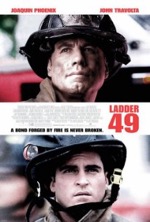
Starring: Joaquin Phoenix
October 2004
“Moving Tribute to Fallen Heroes”
We’ve had our share of movies like Backdraft and Frequency, but Ladder 49 is a different breed of firefighter film. Not to take anything away from the character development or emotional impact of those other films, but Ladder 49, to an even greater degree, reveals the often gritty and grim profession that firefighting can be, while also humanizing the characters…showing them at their best and worst.
Joaquin Phoenix is fast becoming one of Hollywood’s most promising up-and-coming stars. Fresh off his turn as a hapless victim in M. Night Shyamalan’s The Village, Phoenix has taken on a different kind of role this time around—the everyday man.
As the movie unfolds, Phoenix’s character, Jack Morrison, has fallen down several stories inside a fire-enveloped building. As he’s lying in rubble and inhaling stifling smoke, Jack begins to ruminate on his life and the events that brought him to this place. What ensues is a series of flashbacks that flesh-out Jack’s back-story: his first day as a firefighter, the day he met his future wife, the day they married, the day he learned he was going to be a father, the day he lost a friend in a fire, etc. And that’s the gist of the plot…pretty straightforward.
Even though Ladder 49 has some TV drama qualities, the ingredient that prevents the story from degenerating into a documentary on firefighting is the relationships between the firefighters and their unique way of dealing with work-related stress. The “initiation” scenes are some of the most memorable in the movie, as are the extreme pranks they pull on each other: the goose in the locker and the “baby shower” are two prime examples. Running jokes like Lenny Richter’s (Robert Patrick) admission that he’s getting too old for the job also lighten the mood in what ends up being a pretty somber tale.
John Travolta’s presence as fire chief Mike Kennedy isn’t felt very strongly in the film, but his character’s leadership and guidance is: besides his two-hanky speech at the end of the movie, his best monologue comes when his team nearly breaks down (and nearly breaks each other’s skulls) after the death of a fellow firefighter. With great conviction, and perhaps a few too many expletives, he gives his despondent and blame-seeking team a swift kick and tells them to get back on the horse…er, engine.
Newcomer, Jacinda Barrett, turns in a touching performance as Jack’s reserved wife: the expression on her face when she sees her greatest fear through the kitchen window stands out as one of the movie’s most unforgettable scenes.
Despite a fairly predictable plot, Ladder 49 succeeds in paying tribute to the men and women who risk their lives every day to protect the citizens of this country from life-threatening infernos. The story portrays firefighters less as heroes and more like real people who care for the welfare of others, and in this age of average Joe’s and reality shows, this aspect of the movie should really resonate with the masses.
If Ladder 49 does have a flaw, it’s that the firefighters respond to one too may fires (we get the idea already—this line of work is dangerous). But, ultimately, the movie is about people, not fires, and how we deal with life and death, triumph and tragedy. Ladder 49 is one of those rare movies that entertains, but also inspires: the sad, yet uplifting dénouement reveals a degree of panache sadly missing from most scripts these days.
Rating: 3
The Forgotten (PG-13)
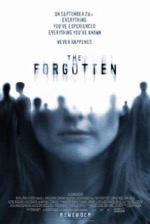
Starring: Julianne Moore
September 2004
“Solid Start, Forgettable Ending”
For three quarters of the movie, I was utterly gripped by the intriguing scenario and rampant paranoia that courses through this unconventional thriller. The film is made even more powerful by believable performances from Julianne Moore, Gary Sinise, Anthony Edwards and Alfre Woodard. Unfortunately, acting is the only element that is believable in the movie, as the story takes a significant left turn near the coda, destroying any momentum established in earlier acts.
Telly Paretta (Moore) lost her pre-teen son, Sam, in a plane crash and hasn’t been able to move past said traumatic event ever since that fateful day. Her memory of her son hasn’t faded one iota since his passing, but every item (picture, articles of clothing, etc.) of Sam’s has begun vanishing…one piece at a time. She accuses her husband (Edwards) and her shrink (Sinise) of conspiring to erase all traces of Sam’s former life. According to the two men, Telly never had a son, a revelation that becomes even more disturbing when she finds no records of the plane crash at her local library. Telly confronts her neighbor, a middle-aged drunk (Dominic West) and helps him remember his daughter that was also on the same plane. Together, Telly and her newfound friend seek to uncover this sinister plot that’s wiped away all physical evidence of their children’s existence. These events set up an interesting question in the viewer’s mind: is Telly crazy, or is some outside agency seeking to discredit and/or mentally destroy her?
Such an intriguing notion should have led to a riveting climax, but instead, the balloon deflates when an otherworldly twist is introduced into the plot. The children were abducted by aliens? This was all one big experiment to test the depths of the maternal instinct?? Even by its own rules, the “alien” subplot doesn’t hold up under scrutiny. How can aliens—with the ability to abduct a plane full of children, erase people’s memories, “beam” people up to the mother-ship and, indeed, even put events back to the way they were before the incident—be hampered by a time constraint on their test? If they can manipulate time, shouldn’t they be able to run the same test on the same person indefinitely? Time is relative, after all.
Therein lays the problem with The Forgotten. Tough hackneyed, a government conspiracy or scientific cover-up would have been a much more satisfying conclusion to such a solid foundation. Even though the special effects are few, they’re groundbreaking and breathtaking. Those scenes, combined with fine performances are the only things that keep the movie from becoming utterly forgettable.
Rating: 2 1/2
Wimbledon (PG-13)

Starring: Kirsten Dunst
September 2004
“Surprisingly Fresh Sports/Romance Story”
At first glance, a movie with an identity crisis between a sports flick and a love story is a pretty bad thing. On the one hand, you run the risk of loosing male interest to some sappy romance and on the other hand, females not interested in sports will spend their movie money elsewhere. Wimbledon is a balancing act that, somehow, manages to pull off the difficult feat of becoming a successful sports/romance movie.
There are several contributing factors to this winning formula. First, the leads are attractive, intelligent and have great chemistry together. Paul Bettany (Master and Commander) plays Peter Colt, a thirty-something, nearly washed-up tennis player who’s taking his last shot at winning Wimbledon. Bettany imbues Colt with a brand of charisma that’s believable and endearing—his voice-overs, containing his innermost thoughts, really serve to humanize the character and provide an honest and refreshing portrayal of a struggling sports star.
Dunst (Spider-Man) plays Lizzie Bradbury, a serious newcomer to tennis who has a track record of being distracted by men during big tournaments. She falls fast and hard for Colt (the whole tennis connection), and a torrid romance ensues, much to the disapproval of Lizzie’s overprotective father, Dennis (Sam Neill).
The movie’s climax is predictable, yet uplifting; Colt wins Wimbledon, and, after weathering a series of relational storms, wins Lizzie’s heart. Colt retires, but Lizzie will continue pursuing her dream of becoming a champion at Wimbledon. And, as would be required of such a tale, they live happily ever after.
The star’s contribution to the movie cannot be overstated, but several supporting characters aid and abet Bettany in making Wimbledon a crowd pleaser. The aforementioned Dennis Bradbury (Neill) is solid, as is Peter Colt’s fanatical father, Edward (Bernard Hill of The Return of the King), and the young heartthrob Jake Hammond (Austin Nichols), who serves as fellow tennis competitor and underdeveloped antagonist. Also making cameo appearances are John McEnroe and Chris Evert, who provide some additional celebrity and credibility.
As an independent film, Wimbledon is a small release and will most likely not receive the attention its due. It’s a shame, because Wimbledon is a feel-good flick that reaffirms the notion that it’s never too late to achieve in life.
Rating: 2 1/2
Sky Captain and the World of Tomorrow (PG-13)
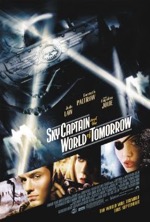
Starring: Gwyneth Paltrow
September 2004
“Long on Title, Short on Plot”
The “1/2” is for a solid cast, overall creativity and the groundbreaking manner in which the movie was filmed. The “two” is for an average tale that is further diluted by props, machines and plot devices that are so farcical and fantastical that they become a huge distraction—even to this reviewer, who can normally suspend his disbelief to the final frontier and beyond.
If Sky Captain and the World of Tomorrow could be distilled into one word it would be “derivative.” The movie borrows from many genre films and borders on plagiarism. Sky Captain (Jude Law) has a dash of Han Solo and a wardrobe similar to Indiana Jones’. And speaking of Indy, Raiders of the Lost Ark rip-offs abound, like the plane flying over the map trick or a fateful trip to the snow-capped mountains of Nepal. The attack on the hangar is suspiciously similar to the one seen in Pearl Harbor. Inside the hanger, as those with a steely eye will observe, is a T.I.E. fighter cockpit from Star Wars. The many plane/ship upgrades are an elaborate tip of the hat to the James Bond movies and the bizarre creatures on the tropical island look like they escaped from Jurassic Park. The robots themselves look like cousins of the Iron Giant and the mechanical, whirring noises they make are like something right out of the sound library from the original War of the Worlds. Also, Dex’s (Giovanni Ribisi) ray gun resembles a Buck Rogers sidearm.
Then there’s the plot. Dr. Totenkopf (canned footage of the late Sir Lawrence Olivier—one of the movie’s only masterstrokes) abducts all of the brilliant scientists previously involved in a top secret project and forces them to create giant robots and other such machines of mass destruction. Totenkopf’s ultimate goal is to create a second ark (rocket ship), which will ferry all of Earth’s animals (plus a few of his own creations) to a new planet, free from the evils of this present world. Trick is, all life on earth will be incinerated when the ship’s rockets burn up our atmosphere—proper judgment for the way we’ve mismanaged the planet. And it’s up to Sky Captain and his Swiss Army plane, along with his bickering partner, Polly Perkins (Gwyneth Paltrow) and his old flame, Franky Cook (Angelina Jolie) to save the day.
Hokey? You bet! And it’s a shame, because the movie features good characters with good dialogue, performed by good actors. The effects are nothing short of amazing and the visual style is moody and unique. If anything holds the movie back it’s the contrived storyline. In the final analysis, Sky Captain and the World of Tomorrow is a brilliant disappointment.
Rating: 2 1/2
AVP: Alien vs. Predator (PG-13)
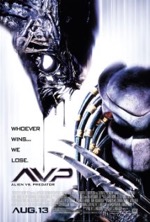
Starring: Sanaa Lathan
August 2004
“Lots of Hype, Not Much Bite”
“Whoever wins, we loose.” The movie’s slogan refers to the humans in the movie, but can just as easily apply to those in the audience…especially if you’ve paid full price. Alien vs. Predator, or AVP, is a lackluster affair that creates a patchwork plot from the highlight reels of the Alien and Predator series. There’s little innovation here, just a few new faces, namely adventurer, Alexa Woods (Sanaa Lathan) and wealthy industrialist, Charles Bishop Weyland (Lance Henriksen) and some updated special effects.
A plot device that runs through both series is that all the secondary characters get thrashed and one main character, somehow, escapes certain death. Be it Sigourney, Ah-nold, or Danny, they all found a way to beat their extra-terrestrial nemeses and in some cases, earned their respect along the way (and in Sigourney’s case, held on just long enough to make a sequel).
AVP’s premise is simple: Weyland discovers an ancient temple beneath the frozen surface in Antarctica. Before his drill team arrives, they discover a shaft has already been cut down to the temple (that should be their first clue to leave the premises). Upon entering the ancient remains, the team learns two valuable bits of information: 1, there’s an Alien hatchery in one of the chambers and 2, the Predators have arrived to do some hunting. The twist: the humans unwittingly steal the Predator’s special weapons, and without them, the Aliens just might be able to defeat the Predators and overrun the earth (oh no).
The story employs a cheesy gimmick (just one, you ask?) with the labyrinthine halls inside the temple; the chambers keep shifting like a giant Rubik’s Cube, separating characters and throwing some right into the path of razor-sharp incisors. The temple reconfigures every ten minutes, which is convenient since that’s the rate at which the humans are being slaughtered. The character development is weak for one reason, the writers don’t want the audience to become too attached, because they’re all gonna’ die anyway.
A motto that’s tossed around too often, and much too frivolously, is, “The enemy of my enemy is my friend.” The Predators have butt-ugly mugs and fight like members of an intergalactic gang, but they do have a code of honor: they won’t kill Weyland because he’s dying of a fatal illness and they show their respect to Woods after she helps kill Big Mama Alien (the trophy ceremony is virtually identical to the one in Predator 2).
Beyond the abysmal plot, there’s nothing redeeming about the movie, save for the brief camaraderie between human and Predator, which brings up an unanswered question: are we friends with the Predators now? Are the Predators getting soft or is it just the screenwriters?
Rating: 2
The Village (PG-13)

Starring: Sigourney Weaver
July 2004
“It Takes a Village…To Scare You Senseless”
M. Night Shyamalan’s fourth chill-fest is both better and worse than his previous cinematic offerings (The Sixth Sense, Unbreakable and Signs). Shyamalan should be lauded for breaking with his usual formula and milieu, while maintaining strong character vignettes and intensely frightening situations. If possible, his directing here is even tighter than in the earlier trilogy and his clout has surrounded him with a stellar cast this time around—his first ensemble piece.
Joaquin Phoenix is back from Signs, and plays Lucius Hunt, a fearless and laconic young man who has a secret love affair with Ivy (Bryce Dallas Howard, Ron’s daughter). Ivy is the blind daughter of village elder, Edward Walker (William Hurt), a reserved man who speaks in nineteenth century English with interminable pauses in each line. Rounding out the cast is Lucius’ mother, played by Sigourney Weaver and the slow-witted Noah Percy (Adrien Brody), who is also secretly in love with Ivy.
The movie sets up a bit slowly, but strikes a crescendo near the midpoint. It isn’t until about three fourths of the way through that tensions mount and events escalate, paving the way for a nail-biting climax and the patented Shyamalan surprise ending.
With The Village, it’s clear that Shyamalan has moved into the upper echelon of Hollywood directors; his craft is well honed and he evoked excellent performances from his actors, especially Phoenix, Howard and Brody—the twisted ménage a trois. It’s a lot easier to create scary scenes at night, but the lion-share of the frightening scenes in The Village are filmed during the day—right out in the open. This is just another testament to Shyamalan’s directorial prowess (I’m gonna’ film it at day and I’m still gonna’ scare the @*!/ out of ya’).
But a nagging question hovers just this side of the dread-inducing forest, is The Village as good as its predecessors? The answer is no, but it’s still a quality thrill-o-rama. Problem: Shyamalan has painted himself into a corner now that everyone is anticipating a trick ending each outing. His big screen sleight of hand will become exponentially harder to pull off now that the audience has become wise to his styles and tactics (I figured out the twist ending halfway through the movie).
James Newton Howard’s score adds another dimension of creepiness to the movie, as well as some early American-flavored cues. The costumes and sets are exceptionally well crafted and lend the movie another degree of authenticity. So, what have we learned from The Village? Stay away from the bad color, avoid mentioning “those we don’t speak of” and hope for a better movie the next time Shyamalan directs.
Rating: 3
Catwoman (PG-13)
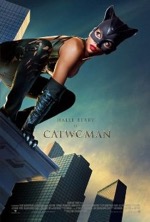
Starring: Halle Berry
July 2004
“Faithless Treatment of Feline Fatale”
I have to admit, Catwoman was a lot better than I thought it was going to be…but that’s still not saying much. This re-imagined version of the sleek and slinky serial villain features no Batman, no Gotham City, little plot, and ultimately, little fun. Catwoman is merely a vehicle picture for Halle Berry, whose acting starts out modest and progressively gets skimpier, much like her wardrobe.
As any Batman aficionado knows, Catwoman’s name is Selina Kyle, not Patience Phillips, and other than the tight cat suit, deadly leather whip and vigilante tactics, this Catwoman bears no resemblance to the original. For whatever reason, the writer and/or producer decided to give Catwoman a modern face-lift (as if that’s necessary) to appeal to today’s audience. What they’ve given us is a paper thin through line anchored by a series of fight scenes.
Recently fired from her job as an art designer, Patience overhears sensitive information about a soon-to-be-launched line of face creams that have known flaws. She’s promptly chased down and drowned in the bay, but fortunately, all the stray cats in the city surround her when she washes ashore and the lead cat (named Midnight) breathes feline vapors on Patience, transforming her in to Catwoman. Now, Patience/Catwoman is on a mission to find her killers and expose the make-up cover-up. Along the way, she meets debonair detective, Tom Lone (Benjamin Bratt) and supermodel turned criminal, Laurel Hedare (Sharon Stone), who engages Patience’s alter ego in a catfight near the film’s climax.
French auteur, Pitof, helmed Catwoman, infusing the movie with frenetic action sequences, a plot stuck on fast-forward and dizzying special effects. His style works well in some instances—like when we get to see through Catwoman’s eyes—and fails miserably in others; most of Catwoman’s leaps and climbs look computerized, sped-up and fake.
Nearly every aspect of Catwoman is average and if it weren’t for Halle Berry, the movie would be a complete loss. For some, seeing Halle frolicking around in a skin-tight, leather cat suit will be worth the price of admission, but if you’re looking for something else in the movie, say plot for instance, you’re sure to be disappointed. Bottom line: if you spent as many dollars as a cat has lives to see Catwoman, you’ve wasted your time and money. The movie certainly isn’t the cat’s meow!
Rating: 2
The Bourne Supremacy (PG-13)

Starring: Matt Damon
July 2004
“Sequel is Supremely Disappointing”
Matt Damon is back as Jason Bourne in The Bourne Supremacy, the second film based on Robert Ludlum's popular spy novels. On the face of it, The Bourne Supremacy has just as much drama, intrigue and action as the first, but upon further reflection, the sequel falls short on several counts.
First of all, we were introduced to Bourne in the original film, so we pretty much know who he is and what he's capable of—we also know a good amount of his back-story. That's a down shot, because most of the fun in the first film was learning about Bourne as he learned about himself (amnesia).
Another aspect missing from the sequel is the romance factor. Bourne's girlfriend, Marie (Franka Potente), is seen in the first ten minutes and then she's conveniently killed off. I say convenient, because Marie's death does service the plot; Bourne comes out of hiding—with a vengeance—and starts tracking down the Russian assassin (Karl Urban) responsible for killing Marie and framing him.
The cast in this movie is almost identical to the previous one with a couple of notable exceptions. Deceased Agent Conklin (Chris Cooper) shows up in one of Bourne's retrieved memories—his first assignment when he killed the Russian president. Brian Cox (X-Men 2) is back as Ward Abbott, the hard-nosed, no-nonsense agent who stops at nothing to cover up top secret project Treadstone, including murdering a fellow agent, and, ultimately, committing suicide. Julia Stiles pops up again in the C.I.A. field ops and is reduced to set dressing once again, performing in a handful of scenes and delivering an equal number of lines. Her character serves no purpose, whatsoever, and Stiles makes such a superfluous cameo, that I don't even remember her character's name. The new face belongs to Joan Allen, who plays the tough, yet sympathetic Agent Pamela Lundy, the most fleshed-out character in the film other than Bourne.
There's a new director this time around, Paul Greengrass, and though his style lends itself to action pictures, his big car chase at the end of the movie was too long and frenetic—the scene plays like a six minute blur. And why another car chase, I ask? We already had our requisite pursuit last movie. Also, we’ve already seen a mano a mano slugfest between Bourne and some well-trained assailant the last time. The subway sequence was original, but most of the action in The Bourne Supremacy feels like stock footage from The Bourne Identity. The Bourne Supremacy is a slightly better than average action movie that doesn't measure up to the first and falls woefully short of my supreme expectations.
Rating: 2 1/2
I, Robot (PG-13)

Starring: Will Smith
July 2004
“Near-future Thriller With More Than Artificial Intelligence”
I have to admit, I, Robot was a lot better than I thought it was going to be. The script was “suggested” by Isaac Asimov’s classic book of the same title, but bears little resemblance to the original, save for the three laws of robotics and how a conflict in logic makes robots go haywire.
The movie opens with the suicide—later determined to be a homicide—of Dr. Alfred Lanning (James Cromwell), and detective Del Spooner (Will Smith) is called in to investigate. Spooner, who detests robots, soon picks up the trail of the fugitive robot and, after an extensive chase scene, brings the artificial man to justice. What Spooner uncovers in his investigation, however, is just the tip of the proverbial iceberg and a much bigger, sinister plot threatens to unleash itself upon the futuristic version of Chicago, circa 2035. Dr. Susan Calvin (Bridget Moynahan) is the only one who believes Spooner’s paranoid theory (no robot has ever killed a human before) and, along with the assistance of good robot, Sonny, helps Spooner fight off hoards of renegade robots while attempting to destroy the faulty computer brain that has turned the new NS-5s into aggressive, killing machines.
Smith doesn’t swagger as much in I, Robot as in Independence Day or the Men in Black films. There’s a bit more depth to his character this time around and Smith brings a maturity of craft to bear upon the part as the android-loathing detective—a role both emotionally and physically demanding.
The special effects in I, Robot are top notch and the near-future technology is especially ingenious: like holographic caution tape, futuristic freeways and cars (some with perfectly circular tires) and, of course, the eerily human-looking robots. Though visually tantalizing, I, Robot is derivative of other sci-fi extravaganzas: the armies of robots harkens back to the armies of battle droids in Star Wars: Episode I, or the throngs of clone troops in Star Wars: Episode II. Also, V.I.K.I, the main computer in control of all NS-5s, invokes marshal law and starts taking over the city by force—“humans must be governed for their own good,” the cold, logical, positronic mind reasons. This is the prelude to a scenario not unlike the Skynet tragedy as featured in the Terminator trilogy.
Even though it’s less than original, I, Robot is a great action flick that keeps you on the edge of your seat with an unexpectedly good storyline and I-popping I-candy to go with your popcorn.
Rating: 2 1/2
King Arthur (PG-13)

Starring: Clive Owen
July 2004
“Disney Revises History…Again”
The opening of the movie posits the notion that King Arthur was alive during the twilight of the Roman Empire and that he was half-Roman and half-Briton. This historical twist is based on newly discovered documents (okay!) that reveal Arthur was alive earlier than generally supposed, as much as a thousand years before the medieval period. Who knew?
The story follows Arthur and his band of scrappy warriors as they fight for their lives and their freedom from Rome; they have one final assignment and then they will receive their papers, but the simple mission goes south when an army of nasty Saxons shows up. A portion of the army chases Arthur, his men and some villagers across an icy lake, and as fate and Hollywood would have it, the ice breaks and swallows most of the Saxons and none of Arthur’s men...or the scantily-clad Guinevere (Keira Knightley), who seems unaffected by the arctic conditions (more on her later).
There's a final standoff between the main Saxon army and Arthur, who rides onto the battlefield alone (he has a host of primitive Ewoks, I mean, Woads waiting in the forest under the command of non-magical Merlin). The climactic battle goes through the motions and tries to wow the audience with gee whiz effects, but the action is static and turns King Arthur into just another excuse to update a classic tale with modern special effects, just because we can.
Even despite the historical paradigm shift, there are way too many anachronisms in King Arthur that detract from the overall purpose of the movie and distract the audience with unnecessary silliness. Take potty-mouthed Sir Bors (Ray Winstone), for instance. Although he provides some much-needed levity, his speech and mannerisms don't match a man of that time period, especially one of Arthur's handpicked champions. Or how about the witch-doctor version of Merlin, who leads a band of hairy, wild Woads (Caucasian aborigines) into battle beside Arthur? And what about Guinevere? In this version of the Arthurian legend, she's less like the traditional princess and more like an Amazon woman, adorned with one, narrow strip of leather across her chest. Are we sure these newly discovered historical documents aren't really Xena re-runs?
Other than Knightley, the only other familiar name in the cast is Clive Owen (Beyond Borders). Owen's Arthur is a courageous man of faith, but sometimes his delivery is too stuffy and dispassionate. All in all, King Arthur will be an epic disappointment to anyone who isn't a Knightley fan.
Rating: 2
Spider-Man 2 (PG-13)
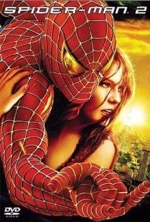
Starring: Tobey Maguire
June 2004
“Comic Book Art Meets High Art”
Spider-Man 2 scales far higher than its predecessor and will undoubtedly surpass the box office mark set by the original. With two solid chapters firmly lodged in the multi-million dollar web, this is already the most overwhelmingly well-received comic-to-screen adaptation and certainly, with just two movies, one of the top-grossing series to date. I’ll go one step further: not only is Spider-Man 2 one of the best sequels of all time, it’s without a doubt the finest superhero movie ever made (move over X-Men).
Tobey McGuire is back as the angst-ridden Peter Parker, and Kirsten Dunst has returned as the object of Peter’s undying affection, Mary Jane Watson (M.J.). A couple years have passed since the first film and Peter is living in a rundown apartment and struggling to pay the rent since he keeps getting fired from entry-level jobs. M.J. has made a name for herself in theater and her face adorns posters and billboards all over the city—ubiquitous and painful reminders for Peter, whose unrequited feelings for M.J. consume his every waking thought.
Peter’s life has begun to unravel due to the demands of being Spider-Man. In addition to his inability to hold down a job, he’s failing college and owes his professor a paper on fusion. Peter prevails upon his good friend Harry Osborn (James Franco) to introduce him to his hero, a fusion expert named Dr. Otto Octavius (Alfred Molina). During an ill-fated fusion experiment, Octavius is transformed into Dr. Octopus, an eight-limbed (four mechanical appendages) menace bereft of conscience or compunction.
Doc Ock goes on a rampage—robs a bank, tosses security guards around like rag-dolls, uses Aunt Mae as a hostage and later takes M.J. hostage. Doc Ock plans to rebuilt the fusion generator, and it’s up to Spider-Man to stop the tentacled madman; however, several complications arise, not the least of which involve his best friend’s hatred of Spider-Man, his own inability to produce webs when distracted by M.J.’s recent engagement to the “Daily Bugle” editor’s son and the rejection he experiences when he confesses to abetting in the death of Uncle Ben (not the rice, silly).
There’s a lot of character development in Spider-Man 2—more so than the first, in fact—and the action sequences, though cutting-edge and pulse pounding, are few. Though atypical for an action film, Spider-Man 2 is an excellent model—and hopefully, trendsetter—for future comic book-based movies. Spider-Man 2 is really the only current action picture I can think of that hasn’t sacrificed character development and plot for glitzy special effects—it’s a complete movie, exhibiting the perfect blend of action, comedy and drama. Spider-Man 2 is movie magic because it has heart, something sorely missing from most big-budget extravaganzas these days.
Tobey McGuire, bad back and all, does a fantastic job of expanding our knowledge of Parker’s inner struggles—he makes the character believable and vulnerable—while maintaining the wit and whimsy that made the character viable and likeable in the original. Alfred Molina has realized one of the most three-dimensional villains in recent cinema history. Though his portrayal of Spidey’s chief nemesis is a bit over the top in spots, the humanity and pathos he infuses the character with elevates Doc Ock above the morass of garden-variety villains. Near the film’s climax, there’s a scene of redemption where Dr. Octavius, now in control of his four pesky appendages, destroys the experiment and drowns himself in the process.
Spider-Man 2 features fine performances by Dunst, Franco and J.K. Simmons as the impulsive, joke-a-minute editor of the “Daily Bugle,” J. Jonah Jameson, but Rosemary Harris really steals the show in her supporting role as Peter’s Aunt Mae. Here’s an actress with an amazing craft—her “heroes” speech to Peter is one of the most poignant moments of the film.
The lion share of the movie’s success belongs to Academy-award winning screenwriter, Alvin Sargent and director Sam Raimi. Like in the first film, Raimi expertly balances action and character scenes. His tip of the hat to the seventies, with “Raindrops Keep Falling on My Head” and his freeze-framed shot of Tobey McGuire, is absolutely hilarious. Spider-Man 2 is high-powered, high concept fare that will appeal to those ages seven to one hundred and seven—it’s brought the fun back to the Cineplex.
Rating: 3 1/2
The Terminal (PG-13)
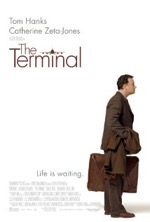
Starring: Tom Hanks
June 2004
“Soars, Despite Being Grounded”
Tom Hanks and Steven Speilberg have become an unstoppable duo at the box office, and every time they collaborate on a film, their mastery of craft and vision increases exponentially (and let's not leave multiple Academy award-winning composer, John Williams, out of the equation; Williams turned in a wonderful, Baltic-flavored score for The Terminal).
Though the premise of the film is quite simple—Krakozhian citizen, Viktor Novorski, is trapped in J.F.K. because his country is at war and the U.S. won't recognize his passport—but it's Viktor's spirit of determination and decency, and the friendships he makes at the terminal, that really gives the movie wings. Viktor is a survivor, he creates a makeshift bedroom in an old, unused airline gate, learns how to speak passable English, learns how to make a living so that he can eat and helps out a lot of people along the way, who, in turn, help him.
One of these friends is Enrique (Diego Luna), a love struck errand boy who agrees to feed Viktor in exchange for information about the beautiful, vibrant immigration agent Viktor sees every day. Viktor is a go-between and, after some time, delivers a ring to the young woman with instructions to join the man of her dreams at the Sbarro pizza joint in the terminal. She meets her secret admirer and the couple is soon married—in the terminal, of course.
Admittedly, this is a little far-fetched—and if there’s an Achilles Heel to this wonderfully endearing tale it's that, despite the veneer of fully realized characters and events, the entire script is fictitious. Everything in the film is well crafted and well acted, but the underlying lack of authenticity makes the story, as a whole, hard to buy.
Take the failed romance between Viktor and "cheating" stewardess, Amelia (Catherine Zeta-Jones), for instance. The writers employ the old apple on a string routine by building up a potential relationship between Viktor and Amelia, but in the end, they yank back the string, and all you're left with is a mediocre, under-developed subplot to close out the movie. Granted, the end of the movie is uplifting—Viktor finally gets out of the airport, and the twit-in-a-suit, head of airport security (Stanley Tucci) fails in his attempt to contain Viktor—but Viktor’s victory in securing the final autograph of a jazz musician for his deceased father is hardly the expected or desired payoff for the film.
Despite its slow pace and utter lack of action, The Terminal is a feel-good drama recommended for anyone who doesn't get claustrophobic.
Rating: 3
The Day After Tomorrow (PG-13)

Starring: Dennis Quaid
May 2004
“Farcical, But a Fun Ride”
The eighties gave us The Day After, a story about the bitter reality of a nuclear holocaust. Now, the new millennium has delivered us a fresh breed of disaster film in The Day After Tomorrow, which brims with a variety of natural calamities and an amazing array of effects to bring them to life.
Granted, the movie is much more enjoyable when you suspend your disbelief right from the opening credits. As unbelievable as it is to accept that global warming can cause an ice age, it's even more of a scientific fallacy to think that an ice age will expend itself after just one week. But that's exactly what happens in Roland Emmerich's (Stargate and Independence Day) big budget, big name flick that stars Dennis Quaid and Jake Gyllenhaal.
Here's the Reader's Digest version: Jack Hall (Quaid) is a renowned paleoclimatologist (say that ten times fast and I'll buy you a sno-cone) who predicts a coming catastrophe due to radical climate shifts. Jack's son, Sam (Gyllenhaal), is on his way to New York City to compete in a high school academic competition. Of course, that's when the earth goes into an epileptic fit, releasing tornadoes in Los Angeles, forming massive tidal waves in Manhattan and unleashing uber-blizzards at the poles.
The rest of the movie is about survival and the human condition in severe conditions. Jack and his two partners strike out to rescue Sam and his classmates, who have retreated into the warmest room of the New York Public Library and have been burning books to stay warm. Jack's vehicle breaks down just outside of Philly, and he walks the rest of the way to Manhattan over snow and ice in just a couple days (is your disbelief still suspended?). In the end, Jack rescues his son, but the resolution is bittersweet because the northern U.S. is now an icebox.
Other than special effects, I don't see The Day After Tomorrow winning any major awards, and there are several reasons why. Even with shallow character development (Sela Ward and Ian Holm were tremendously underserved), a derivative plotline and shoddy science, the biggest injustice in the film is its blatant political agenda. However extreme and speculative, the environmentalists have made their point about the side effects of mass energy usage.
The movie became a platform and to its own detriment—The Day After Tomorrow would have been much more enjoyable without the sermon on conservationism. And what about the other message during the reverse-immigration scene, when thousands of Americans flood into Mexico, seeking warmer environs and the ensuing politically correct speech delivered by the newly-promoted president of the U.S.? Again, The Day After Tomorrow was a great popcorn movie, but these "preachy" moments made me choke on a kernel. Oh, and one more thing, what business does a wild pack of wolves have roaming into a disaster picture?
Rating: 3
Shrek 2 (PG)

Starring: Mike Myers
May 2004
“Not as Original as the Original”
Shrek 2 picks up where the first movie left off, more or less. The video portion of the 3-D ride at Universal Studios (which has now been released on DVD, complete with 3-D glasses) serves as an unofficial Shrek 1.5.
All the regulars are back from the original movie; Mike Myers as the abrasive ogre, Shrek, Eddie Murphy as the vociferous Donkey and Cameron Diaz as the model turned ogrette, Princess Fiona. Some new faces—and accompanying voice talents—also grace the jolly green sequel, like Antonio Banderas as Puss In Boots, Jennifer Saunders as the Fairy Godmother, Rupert Everett as Prince Charming, comedian John Cleese as Fiona’s father and the incomparable Julie Andrews as Fiona’s mother.
The movie opens with the long, exhausting journey to the land Far, Far Away, which turns out to be a fairy tale version of Hollywood (wait a minute, Hollywood is a fairy tale!). The king and queen, along with the rest of the kingdom, go into collective shock when the ogre couple jumps out of the onion carriage. One of the highlights of the movie is the ensuing dinner at the royal table, where insults and belches abound in one of the most unique “meet the parents” sequences ever committed to film. Later that night, the king plots to have Shrek assassinated by Puss In Boots. His evil scheme expands when he arranges a wedding between the reverted Fiona (a potion belonging to the Fairy Godmother changes her back to a beautiful princess) and Prince Charming. Of course, the King’s plans are foiled and they all live happily ever after, but some hilarious misadventures take place before the storybook closes.
The double entendres have been toned down from the first picture, but inside gags and tips of the hat to other movies or TV shows are ubiquitous…in fact, you can make a game out of who can find the most references. Here are just a few: as they ride into Far, Far, Away, you can see a sign that reads “Farbucks Coffee.” Rolling up the hill, Donkey says, “Swimming pools and movie stars” (Beverly Hillbillies). Later still, Puss In Boots pops out of a guard’s breastplate (Alien).
But even with new characters, situations and gags, Shrek 2 still doesn’t live up to the quality of its predecessor. There’s something missing from the movie, but it isn’t easy to determine what that absent something is. Maybe it’s that the newness has worn off or that Shrek 2 doesn’t have the same “movie magic” that the original had in spades. Either way, Shrek 2 is a winner, as sequels go, but is still inferior to the original. Oh, and one more thing, make sure you sit through the end credits…there are some additional scenes that are hilarious, but just plain wrong.
Rating: 2 1/2
Van Helsing (PG-13)
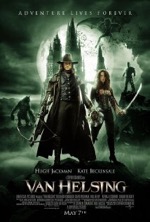
Starring: Hugh Jackman
May 2004
“Everything but the Mummy”
Mutants, werewolves and vampires…oh my! Van Helsing, the newest in a long line of creature features, is overstuffed with evil figures from classic literature. After the old-style, black-and-white prologue—which sets up Dracula’s plot and Frankenstein’s plight—Van Helsing (Hugh Jackman) dukes it out with Mr. Hyde in the chapel of Notre Dame (I thought the hunchback hung out there, not Dr. Jekyll’s alter ego). This action-packed vignette has no bearing on the storyline other than to introduce the audience to Van Helsing’s abilities and gadgets.
The story really begins in Transylvania, where villagers are being assailed by three screeching, swooping she-vampires (Dracula’s brides). Van Helsing arrives not a moment too soon and rescues damsel in distress, Anna Valerious (Kate Beckinsale), along with the rest of the harried village by shooting a crossbow dart dipped in holy water through the chest of one of the screaming demonettes.
Count Dracula (Richard Roxburgh) schemes to take over the world by mating with his wives and producing little, flying gremlins. The experiment fails and the count realizes the only way to successfully produce offspring is to find Frankenstein and discover what techniques were used to bring him to life (is this a B movie plot, or what!). Van Helsing is faced with a difficult choice: in order to save the world, he must kill Frankenstein. As he searches for an alternative, he encounters the dreaded count—the movie wouldn’t be complete without a melee between Van Helsing and Dracula.
Hugh Jackman (X-Men) is no stranger to big-budget, effects-driven pictures, and his performance gives Van Helsing some much-needed weight. Kate Beckinsale (Pearl Harbor) plays the typical tough woman, but she breaks down when her brother is turned into a werewolf. Her performance displays a convincing blend of strength and vulnerability. Van Helsing’s assistant, Friar Carl (David Wenham of Lord of the Rings fame), is the movie’s only comic relief, and is the man responsible for creating all of the weapons and devices Van Helsing employs in battle.
Helming Van Helsing is Stephen Sommers (The Mummy), who was the perfect choice considering his extensive experience with creature movies in the past. Drawing from The Mummy films and other movies like Raiders of the Lost Ark, Sommers has painted a new look for action pictures, albeit in broad, gray strokes on a rather dark canvas. Though populated with familiar characters, Van Helsing features new twists and is an exhilarating ride, despite intensely evil scenes. But, in the end, good triumphs over evil and Van Helsing rides off into the sunset toward countless sequels and marketing tie-ins, no doubt.
Rating: 2 1/2
Godsend (PG-13)
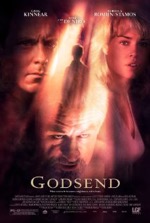
Starring: Robert De Niro
April 2004
“Disturbing for the Sake of Being Disturbing”
This is a hard movie to rate. On the one hand, Godsend is an excellent movie when it comes to acting, directing and screenwriting. However, it’s so dark and disturbing, and devoid of any kind of virtue or edification, that the natural tendency is to grade down. This isn’t the first time a movie of this genre has been produced, and there certainly have been finer examples, (i.e. The Sixth Sense and What Lies Beneath), but the fresh angle here is the salient topic of cloning and genetic manipulation.
If there’s any saving grace to Godsend, it’s that it paints a graphic picture of the potential terrors that await us as scientists continue flirting with genetics. Whereas Jurassic Park was frightening because it revealed the dangers of cloning dinosaurs, Godsend is even more terrifying because it deals with re-creating a human being.
Here’s the scenario: Paul and Jessie Duncan (Greg Kinnear and Rebecca Romijn-Stamos) loose their eight-year-old son, Adam (Cameron Bright), in a car accident. At Adam’s funeral, Dr. Richard Wells (Robert DeNiro), approaches the Duncan family and offers them a chance to get Adam back through a cell cloning process he has recently perfected. Reticent at first, the Duncan’s break down and ultimately agree to go through with the process. Eight years later, after the second Adam (the symbolism is as subtle as a 2X4 to the head) grows past the experiences of his predecessor, new memories and behaviors begin to emerge. It’s later discovered that the new personality comes from Dr. Wells’ deceased son—Wells introduced some of his son’s D.N.A. into Adam’s—who just happened to be homicidal and suicidal (he burned a school to the ground around him along with other students and teachers). The ending doesn’t really resolve anything and leaves everything wide open to individual interpretation, making it the weakest link in an otherwise thought-provoking script.
The first half of the movie is a bit slow, but does a good job of painting the main characters, their dilemma and their fateful choice. But, the second half of the film is little more than a horror movie in the vein of Bad Seed or The Good Son. Godsend services the audience by presenting a human cloning experiment gone horribly wrong, but it does a disservice by remaining morally ambiguous—presenting a case where cloning was bad “in this instance” because of D.N.A. tampering. It’s one thing to clone an animal and quite another to clone a human, or to put it a different way, we can clone a body, but can we clone a soul? This is the kind of moral/religious question the movie conveniently avoids, and maybe the safer route is the better one—after all, it’s just a movie.
Godsend is anything but, and manufactures goose bumps with haunting dream sequences, musical flourishes and things that jump at the camera. It’s a wild ride, but certainly isn’t for the faint of heart.
Rating: 2 1/2
Bobby Jones: Stroke of Genius (PG)

Starring: Jim Caviezel
April 2004
“Inspiring, True Story is a Hole in One ”
Football has Remember the Titans and Rudy. Basketball has Hoosiers and Space Jam. Hockey has Miracle and The Mighty Ducks. Baseball has The Rookie, The Natural, The Sandlot, Bull Durham, Field of Dreams, A League of Their Own and too many others to mention here. Now golf has Bobby Jones: Stroke of Genius, the definitive film on the subject.
Bobby Jones was arguably the greatest golfer to ever play the sport—he’s the only person in history to win all four major golf tournaments (the Grand Slam) in the same year. He was sickly as a child, but fell in love with golf at an early age, watching many golf legends play at nearby St. Andrews Golf Course in Scotland. By age fourteen, Bobby was a golf prodigy, but he retired at twenty-eight due to continued failing health and his desire to start a family.
James Caviezel (The Passion of the Christ) plays Bobby Jones, and his pitch-perfect performance reveals Jones’ many passions…both good and bad. Jones’ biggest detriments on the fairway were his explosive temper and potty mouth, both of which became manifest every time the ball went somewhere he didn’t want it to go. As a means of dealing with his debilitating condition, Jones also consumed great amounts of alcohol, which, of course, produced many additional problems. On the flip side, Jones was a decent and fair man, sometimes to a fault…at one tournament, he called a penalty on himself.
The supporting cast in the movie is exceptionally strong. Claire Forlani (Meet Joe Black) plays Jones’ supportive wife, Aidan Quinn (Practical Magic) portrays one of Jones’ golf heroes, and Malcolm McDowell (A Clockwork Orange) is Jones’ mentor (think Obi Wan with a golf club). Also appearing in a cameo role is well-known evangelist, Alistair Begg, who plays Stanley, friend of the family and a great golfer in his own right.
Stroke of Genius is a straightforward drama film that has little action, and, therefore, will seem boring to some moviegoers. The plot contains no major twists but does posit a tidbit of social commentary; Jones’ mentor makes the assertion that money is ruining amateur sports. In recent years, we’ve seen just how prophetic that statement was. Bobby Jones: Stroke of Genius is entertaining and heartwarming, but it certainly won’t go down as the greatest sports movie ever made.
Rating: 3
The Whole Ten Yards (PG-13)
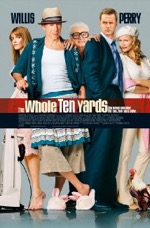
Starring: Bruce Willis
April 2004
“A Dud by Any Measurement”
I have two confessions to make regarding The Whole Ten Yards. I never saw the original The Whole Nine Yards, although I got the gist of the plot from the trailer. Secondly, I was bored with the movie even while the opening credits were still rolling. The movie failed to engage me on any level, and to call it entertainment would be a gross overstatement.
Part of the movie’s problem is its identity crisis—is it a comedy (it’s not all that funny), is it an action flick (there are only a few, short action sequences), or is it a family film (certainly not—discussions of shooting someone in the head or killing bums for sport are all too common). Since The Whole Ten Yards can’t be categorized by genre, it comes off as a particularly strange slice of Americana, complete with a highly-paranoid, tightly-wound dentist (Matthew Perry), a reformed hit man, Jimmy the Tulip (Bruce Willis), who now spends his time refining his culinary skills and tending to chickens, and his girlfriend (Amanda Peet), who desperately seeks to become the caliber of assassin Jimmy was in the past.
Add to that eccentric line-up Jimmy’s conniving ex-wife (Natasha Henstridge) and a larger-than-life mob boss (Kevin Pollack) who is revealed as Jimmy’s father in the movie’s climax (as if anyone didn’t see that coming), and you have a pretty bizarre cast of characters. The vast majority of acting in the movie is over-the-top, tongue-in-cheek and zany for the sake of being zany.
In fact, “zany” is really the most appropriate word to describe The Whole Ten Yards. It’s almost as if the producer/director/writer decided to push the envelope to absurd limits just because they could. The only scene I found remotely amusing was actually a recycled gag from Weekend at Bernie’s, where lifeless limbs of the Hungarian boss’ son are manipulated to give him the appearance of being alive. But even that was a shallow laugh.
It’s hard to find any redeeming qualities in the movie and its inane and mind-numbing storyline affixes a big minus sign to this B movie. The Whole Ten Yards may be one yard greater than the original, but it’s still a mile short of being entertaining.
Rating: 1 1/2
The Alamo (PG-13)
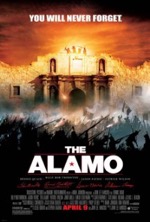
Starring: Dennis Quaid
April 2004
“Memorable Remake of Historic Tale”
Billy Bob Thornton as Davy Crockett? Dennis Quaid as Sam Houston?? No major female actor anywhere in the cast??? On the face of it, this modern take on the centuries-old massacre seems a bit underpowered and a tad ill timed. Amid the deluge of epic pictures this last fall (The Last Samurai, and The Lord of the Rings: The Return of the King), The Alamo was pushed back to this spring. Unfortunately for The Alamo, fervor for epics has sublimated a great deal since December, but will undoubtedly be rekindled with the upcoming Troy and King Arthur. It’s too bad that The Alamo was released during the lull period, because it is a solid effort.
There’s very little departure from the actual, historical events, which is a blessing and a curse. The blessing is that The Alamo isn’t “cutesy” and doesn’t succumb to radically re-writing history like so many other modern “period” pieces. The curse is that the movie feels like a glorified History Channel special; a sterile, stagnant time capsule, not a living, breathing entity. The movie stays on the fringes of the action and never really accesses the visceral emotions of the tragedy. What made blockbusters like Titanic and Pearl Harbor successful is that they introduced original characters into the action and we, as the audience, experienced the historical event through the eyes of these fictitious characters. This made us feel as if we were right there with them, becoming a part of history in a very exciting and frightening way. This storytelling style has a bigger emotional payoff if it’s executed properly, but also runs the risk of being rejected by the public and lambasted by critics.
For better or worse, The Alamo remained faithful to the original cast of characters, without introducing any new ones. The advantage to this approach is name recognition: we’re all familiar with names like Davy Crockett, James Bowie (Jason Patrick) and Gen. Santa Anna (Emilio Echevarria). The disadvantage is that there’s very little character development that can be presented outside of what we’ve already learned in history books. In the movie we see Bowie proudly display his patented knife and hear Crockett play a fiddle, and that’s nearly the extent of all character development in the picture. The only real character growth involves a lesser-known character, Lt. Col. William Travis (Patrick Wilson), who comes of age after being christened the new fort commander.
All in all, The Alamo is entertaining and is a great reminder of the sacrifices that were made so that we can enjoy freedom today…especially in the Lone Star state. However, it remains to be seen if audiences and critics will remember The Alamo.
Rating: 3
Hellboy (PG-13)
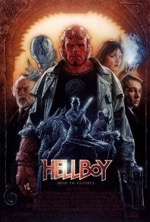
Starring: Ron Perlman
April 2004
“Hell-bent on Action”
This movie is successful for one reason: Ron Perlman. The story is engaging, but sometimes it gets either too strange of too dark. The special effects are great, but a bit repetitive—how many slobbering, butt-ugly hell hounds can you endure before you’re ready to see something else? Every other aspect of the film is well made, but it’s really Perlman’s performance that prevents Hellboy from sliding into the Valhalla of B movies. Perlman has spent most of his career covered with make-up and prosthetics—Beauty and the Beast (TV show), Blade II and Star Trek: Nemesis just to name a few—so he was a natural choice for this devil-may-care hero, who has now been vaulted from the pages of the Dark Horse comic book onto the silver screen.
Hellboy has leathery, red skin, a massive right forearm (Cheesy Line Alert: “Look at that Whammer!”), and two filed horns on his forehead—in short, his appearance is anything but human. And yet, Perlman has infused the character with so much wit and vulnerability, that Hellboy exhibits more humanity than any other person—human or other—in the movie.
Hellboy has a close relationship with Prof. Trevor “Broom” Bruttenholm (John Hurt), the man who found the nascent red creature and became his mentor and surrogate father. Hellboy also has a secret love affair with fellow mutant, Liz Sherman (Selma Blair), a woman who can turn her assailants into toast if sufficiently provoked. The middle of the film brings about a couple of major twists with these relationships: Hellboy’s new assistant, F.B.I. agent John Meyers (Rupert Evans), unwittingly attracts Liz’s affections and Prof. Broom is killed by the movie’s antagonist, Kroenen, a centuries-old man who brandishes two retractable blades inside his cuffs and has sand for blood.
Rounding out the bizarre cast is Abe Sapien (performed by Doug Jones and voiced by David Hyde Pierce), an aquatic humanoid with incisive forensic skills and a scientist at the Bureau of Paranormal Research and Defense, Dr. Tom Manning, played by the ever-witty Jeffrey Tambor. Director, Guillermo Del Toro, helmed the action sequences with adequate panache and handled the intimate, character scenes well, but the overall darkness (both literal and spiritual) of the picture is a drawback, despite Perlman’s moments of levity. On the spectrum of comic book movies, Hellboy clobbers Daredevil and The Hulk, but doesn’t pack the punch of blockbusters like X-Men and Spiderman.
Rating: 2 1/2
Starsky & Hutch (PG-13)
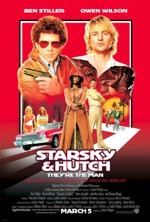
Starring: Ben Stiller
March 2004
“Groovy, But Not Great”
Acting:
This movie is Ben Stiller and Owen Wilson. Without the chemistry between these two comedic actors—who have collaborated on seven films now—Starsky and Hutch would be a fro-sized disappointment. Vince Vaughn (Psycho) does a serviceable job as the movie’s cookie-cutter seventies villain (who comes complete with a Fu Manchu mustache), and his pet, played by Juliette Lewis, is the stereotypical airhead (pothead?), flower chick whose no brains and no initiative character serves no other purpose than to massage her honey’s shoulders and deliver inane dialogue. The most colorful character in the movie is the glitzy Huggy Bear, played by Snoop Dogg, a shady figure who walks a dangerous tightrope between both sides of the law. His scenes as the golf caddie are absolutely hilarious. Carmen Electra adds a pretty face to the movie, but little more.
Director:
Starsky and Hutch—the movie—is nothing more than a glorified seventies television show, which seems to be the intent of director Todd Phillips (Road Trip). Besides hair and clothing styles and accompanying faves from groups like The Carpenters, Phillips utilizes old-style camera moves to capture the flavor of the original show. And, if you’re going to have a movie based on a seventies TV show, you’d better have the requisite fistfight and prolonged car chase, which, of course, this modern version also features.
Screenplay/Story:
Like the rest of the movie, the plot is typical of the seventies TV show, but the story elements, such as drugs, free love and violence have been updated, modernized and pushed to the extreme. In comparison to this new flick, the original TV show seems sanitary: what was a cutting-edge cop drama in the seventies would now be considered a family show. Social commentary aside, the movie never goes anywhere; there are no curveballs, no cliffhangers and no creative flourishes in most respects. Complete with the iconic, cherry-red Gran Torino with white lightning bolt along the side and a sea of Afros and bell-bottoms, the story is nothing more than nostalgic drivel.
Final Analysis:
Matinee all the way, dude!
Rating: 2
Hidalgo (PG-13)

Starring: Viggo Mortensen
March 2004
“Intelligent and Inspiring Action Movie”
The trailer for Hidalgo proudly boasted: “The king is back.” The king, of course, refers to Viggo Mortensen’s Aragorn from Best Picture winner, The Lord of the Rings: The Return of the King. This assertion is no understatement. Mortensen, a journeyman actor with dozens of supporting roles to his credit, has finally come into his own as a leading man. Besides his striking features—which make most women wilt—Mortensen is adept at playing dramatic, comedic or action sequences, and can transition from one to the next faster than you can say Frodo.
Mortensen’s portrayal of real-life horse racer, Frank T. Hopkins, is a unique blend of Aragorn and Indiana Jones—Hopkins’ adventures along the 3,000 mile “Ocean of Fire” race in the Arabian Desert were equal parts exhausting and inspiring. A special relationship existed between Hidalgo, the painted mustang, and Hopkins, and this rapport serves as the spine of the tale; everything else in the movie is just historical (dubious in some instances) window-dressing. Hidalgo was mixed, as was his master—Hopkins was a half-breed, a Native American whose Caucasian features saved him from the slaughter at Wounded Knee. Enduring great internal and external adversity, these two wounded spirits drew strength from each other, overcame impossible odds and emerged as the victors of the endurance race.
Some silver screen legends appear in the film: Malcolm McDowell’s (A Clockwork Orange) character only appears for a brief instant on the trans-Atlantic cruise ship, but Omar Sharif (Dr. Zhivago) plays a more significant role as the Muslim leader in charge of the race. Director, Joe Johnston (Jumanji, October Sky and Jurassic Park III), was the perfect choice for Hidalgo, a movie with adrenalin-filled action sequences and intimate character vignettes—Johnston excels in both areas.
Hidalgo has a certain charm about it that is akin to the old-style Westerns, where the good guy always prevailed thanks to his own virtue and the loyalty of his steed. It’s this kind of old-fashioned storytelling that is sadly lacking from most Hollywood movies today. Some will find Hidalgo wanting as an action picture because of its attention to character development and plot, but these are the very elements that lift the movie above the morass of shallow, effects-laden films that seem to dominate at the box office. Hidalgo is and intelligent and inspiring adventure movie that’s appropriate for the entire family.
Rating: 3
The Passion of the Christ (R)
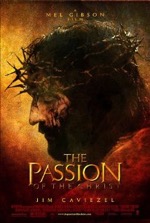
Starring: Jim Caviezel
February 2004
“The Most Graphic Story Ever Told”
The Passion of the Christ is the most powerful and controversial movie ever made. What makes the film powerful is an engaging script, emotional performances and inspired direction; it’s the first “Jesus” movie that’s ever depicted the Savior with more than just a trickle of blood flowing down His brow. It’s controversial because of the graphic scenes surrounding Christ’s torture and crucifixion and due to charges of anti-Semitism.
POWERFUL:
Beyond the scourging and crucifixion, The Passion of the Christ is powerful because of the humanness of the characters and the horrific situations they find themselves in. Take Pilate (Hristo Naumov Shopov), for example; reticence is written all over his face as he presents Jesus to the seething mob. Whether filled with compassion or dispassion, it’s very clear that Pilate feels trapped and just wants to rid himself, one way or the other, of “the king of the Jews.” And then there’s Mary, mother of Jesus (Maia Morgenstern). As Jesus stumbles down the Via Dolorosa, toting the cross on His back, He falls to the ground and Mary has a flashback to when Jesus tripped and scraped His knee as a boy. Who will ever forget the look on her face? Or who will ever be able to forget Jesus’ anguish in the garden or the scourging or the crucifixion as a result of James Caviezel’s Oscar-caliber performance? Or the downright creepy portrayal of Satan by Rosalinda Celentano?
CONTROVERSIAL:
Is The Passion of the Christ anti-Semitic? Pilate washes his hands of Christ’s blood, so that would seem to place bloodguilt on the Jewish people. And yet, it was the Romans that nailed Him to the cross. I think the point is clear: we are all guilty. It was our sin that nailed Christ to the cross; that’s why none of the faces of the Roman guards are shown. It’s almost as if director, Mel Gibson, is saying, “insert your face here.” As has been well publicized, it was Mel’s hands that were shown hammering the nails into Christ’s hands and feet in the movie—we must all take responsibility for the weight and consequences of our sin. That’s the message of the movie, not that the Jews were solely at fault.
The film is also controversial in some Protestant circles, as Gibson textured the movie with many added or contrary elements borrowed from Catholic mystic, Anne-Catherine Emmerich. At first glance, the aberrations from the sacred text simply seem to be stylistic embellishments, but upon further scrutiny, these altered scenes would certainly smack of heresy in the Protestant mind.
Here are just a few prime deviations from scripture: 1. Satan tempts Jesus in Gethsemane, 2. Jesus is lashed thirty-nine times on the front and back, 3. Pilate’s wife gives Mary some towels, 4. Mary and Mary Magdalene wipe up Jesus’ blood after the whipping, 5. A crow pokes out the eye of the unrepentant thief and 6. Roman soldiers take Jesus off the cross (the Bible claims that Joseph of Arimathaea and Nicodemus took Him down).
Whether you view the movie as controversial or whether you even believe the story is presents, there should be no doubt in anyone’s mind that this is a stupendous achievement…a superior piece of cinema. With A-list acting, directing, writing and scoring, The Passion of the Christ is an illumined effort, divinely crafted with images and events that won’t soon be forgotten.
Rating: 4
Welcome to Mooseport (PG-13)
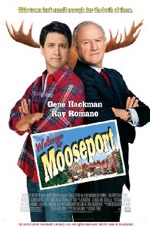
Starring: Gene Hackman
February 2004
“Welcome to Mediocre Entertainment”
Acting:
I don’t know what’s more amazing, the fact that this movie has a stellar cast or that a stellar cast would agree to do this movie. And stellar is no understatement. Movie stalwarts Gene Hackman (Runaway Jury) and Marcia Gay Harden (Mystic River) add their talents to the film, but seem out of place amid such pedestrian fare. Television hacks, Ray Romano (Everyone Loves Raymond), Maura Tierney (ER), Christine Baranski (Cybil) and Fred Savage (The Wonder Years) round out the cast, but there’s no stand out performance—here is a solid group of actors who desperately try to give weight to their roles but can’t because of the poorly written…
Screenplay/Story:
The scenario of a newly retired president of the United States running for mayor against the local plumber in a sleepy burg in Maine is just about as far-fetched as they come. Did the writers stop to answer the “Who cares?” question before they attacked their keyboards? Of course not! The only story element that gives Welcome to Mooseport any spice is the jealousy factor. Ex-president, Monroe “Eagle” Cole (Hackman) asks out Sally Mannis (Tierney) who is dating Handy Harrison (Romano). Sally is waiting for Handy to get the gumption to ask her to marry him, so she spites Handy and accepts the dinner invitation with Monroe. Now Monroe and Handy are fighting for the same office and the same woman. The date between Monroe and Sally also elicits jealousy from Monroe’s assistant (Harden), who has secretly admired the ex-pres. for years. In the end, Handy proposes to Sally and Monroe and his assistant hook up. And, with the exception of a thinly veiled election twist, that’s the extent of the plot.
Final Analysis:
Welcome to Mooseport tries to be funny, but isn’t. This is Ray Romano’s big screen debut and with a performance like this, he should stick to the small screen where he has great comedic success. The movie screams “low budget”…there are very few sets and the characters never leave the stifling confines of Mooseport. It’s too bad the story couldn’t support the caliber of actors it features and that its writers couldn’t come up with something more original and engaging.
Rating: 2
Miracle (PG)
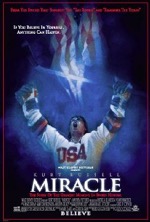
Starring: Kurt Russell
February 2004
“Real Story with Real Heart”
Acting:
This is a defining role in Kurt Russell’s career—ironic since he got his start doing cornball movies for Disney in the sixties. Russell’s portrayal of coach Herb Brooks is natural and believable, especially his Minnesotan accent. Brooks was equal parts coach, motivational speaker and psychologist and Russell melds all three seamlessly. Patricia Clarkson (Far From Heaven) plays Brooks’ wife, a woman who grapples with her distant husband’s other love—hockey. In the end she decides to stand by her man through the stormy moments of their marriage—something that happened far more frequently in 1980 than in the present day. Noah Emmerich (Frequency) is Brooks’ loyal assistant coach, an underserved character that has more whistle blows than lines in the movie.
Costumes:
Nice checkered wool pants!
Screenplay/Story:
Miracle is based upon the true story of the gold-medal winning U.S. Hockey team at the 1980 Olympic winter games in Lake Placid, N.Y. A total David and Goliath scenario: a newly assembled American team of young college players defeats a veteran Soviet Union team which had won every gold medal in their event for the last twenty years. There’s no surprise ending here—the story of this “miracle” team and its exploits have been touted as one of the greatest moments in amateur sports for the last twenty-four years. What makes Miracle worth seeing is not so much the end result as the journey that got them there. Brooks’ unorthodox coaching strategies and the personal stories of the young men on the team create the backbone of the story—without these ingredients, the movie would be little more than a glorified sports documentary. And speaking of documentary, the historical footage that peppers the new scenes really gives the movie a proper sense of context and provides a great deal of authenticity.
Final Analysis:
Miracle is an inspirational movie the whole family can enjoy and imparts a sense of pride and patriotism. The movie is a testament to the fact that miracles can still happen with focus, determination, teamwork and good old-fashioned hard work—an important reminder to a generation that has faced very little adversity…lest we forget.
Rating: 3
Big Fish (PG-13)

Starring: Ewan McGregor
January 2004
“Fanciful Tale that Flounders at Times”
Bizarre. It’s the only word that seems to fit this lavishly mounted, finely crafted, yet strangely avant-garde effort.
Touted as Tim Burton’s masterpiece and a modern Wizard of Oz, and seemingly falling short on both counts, Big Fish is, however, a wildly imaginative romp through the mind and memories of Edward Bloom (Ewan McGregor and Albert Finney), a man of unique vision and singular purpose.
Through a series of flashbacks—which contain elements of truth but come off like tall tales—the aged Edward regales stories of love and war, mysteries and misadventures to his estranged son, Will (Billy Crudup). Giving color to the vignettes is a diminutive circus master who becomes a wolf at night (Danny DeVito), a poet turned bank robber (Steve Buscemi), and a beautiful young blonde (Helena Bonham-Carter), who also appears as a frightening witch; if you stare into her blind eye, you will see the moment of your death.
For all of its strangeness, however, there’s an underlying humanity that shines through and anchors the more whimsical elements of the film. The movie finally finds its voice near the end when Will, normally embarrassed by his father’s flamboyant stories, comes to understand their purpose and honors Edward with an embellished version of his father’s final moments. It’s at this point that you realize the movie hasn’t been about far-fetched tales at all, but about the characters in the story. This is nowhere more vividly displayed than at Edward’s funeral; all of the fanciful figures in his stories are in attendance—though far less outlandish in real life.
Due to its excessive ambiguity and multi-faceted storyline, there are many philosophical nuggets to be unearthed here—some of which are buried quite deep. There’s a parallel between the pristine town of Spectre and the U.S. in the 50s: the supposed Golden Age of American history. When Edward returns to the little slice of paradise later in his life, he is shocked to find the burg in shambles. This might be a representation of present day (or post 9-11) America. Of course, this is one possible interpretation of the movie, and that’s what makes Big Fish so intriguing and endearing. What is the truth and what does it mean in a subjective sense?
Big Fish asks more questions than it answers, but it does entertain and features fine performances by McGregor and Finney. In the end, it remains somewhat of an oddity, but it’s certainly a better catch than the normal fish story.
Rating: 2 1/2